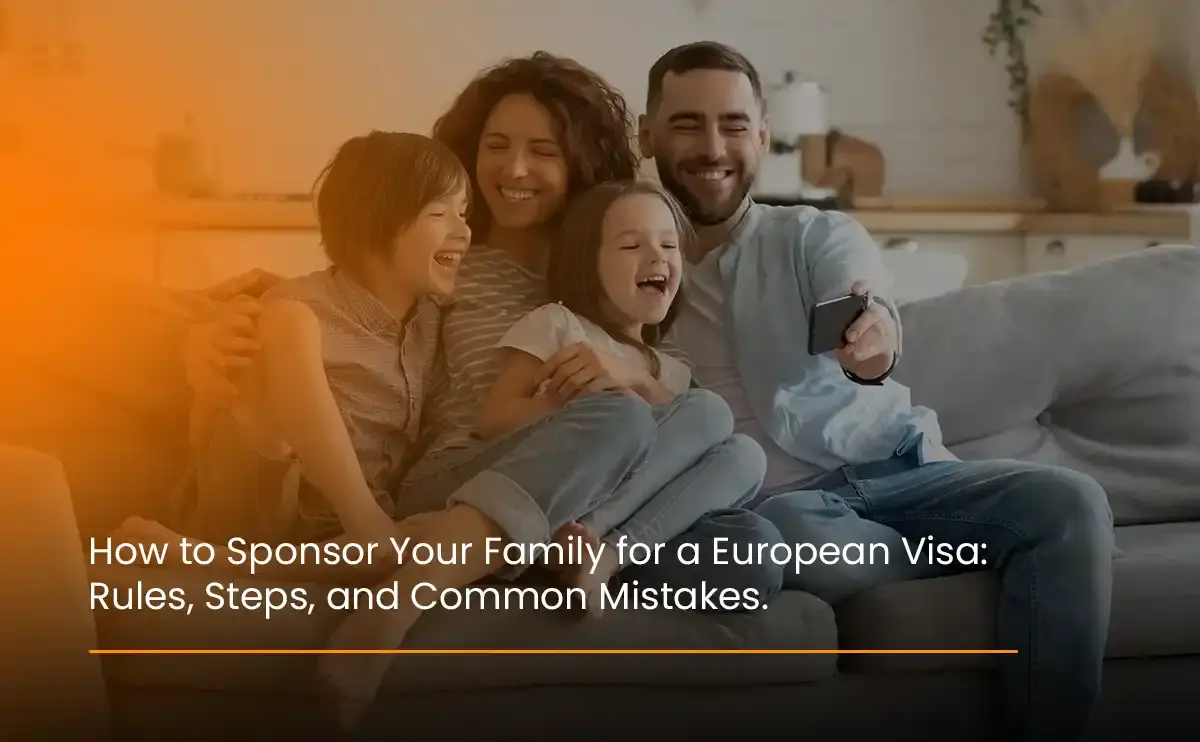
Family Sponsorship for European Visa: Rules, Steps & Common Mistakes
Quick Summary
- Family sponsorship allows people legally living in Europe to bring their spouse, children, or other close relatives to live with them.
- European country rules vary, but most require income proof, housing, and a legal stay.
- The family visa application process includes checking eligibility, preparing documents, applying at embassies, and waiting for approval.
- Common mistakes include missing documents, incorrect translations, or applying under the wrong visa type.
- With the right planning, bringing your family to Europe can be smooth and successful.
Table of Contents
What Is Family Sponsorship?
Family sponsorship is a process that lets someone who is legally living in a European country bring their close family members to join them. This often includes:- A spouse or legal partner
- Children under 18
- Sometimes parents or other dependents (depending on the country)
How Does a Family Visa Application Work?
Every country in Europe has different steps, but most family visa applications follow a similar process:1. Understand the Country’s Rules
Start by learning the European country’s rules for the country where you live. Here are a few examples:- Germany: Requires a residence permit, basic German language skills (A1), and income proof.
- France: Requires proof of long-term stay, stable income, and adequate housing.
- Netherlands: Requires the sponsor to have lived there for a set time and provide full health insurance.
2. Prepare the Right Documents
Every application needs strong documentation. Typical documents include:- Valid passport (for both sponsor and family member)
- Marriage or birth certificate (to prove relationship)
- Proof of income or employment
- Proof of housing (rental agreement or ownership papers)
- Residence permit or visa of the sponsor
- Health insurance details
- Completed visa application form
- Sometimes: language certificate or criminal background check
3. Submit the Family Visa Application
The family member who is applying usually submits the visa application at the local embassy or consulate in their home country. At the same time, the sponsor may need to send supporting documents to immigration authorities in the European country where they live.4. Wait for Approval
Processing times vary between countries. Some may take several months, while others take four to eight weeks. During this time, immigration offices review documents, check eligibility, and verify the relationship.5. Visa Issued and Travel Begins
Once approved, your family member receives their visa and can travel to join you. In many countries, they will also need to register with local authorities after arriving.Key European Country Rules to Know
Although rules change slightly by country, most European countries’ rules follow a similar pattern:- The sponsor must be living legally in the country (work permit, student visa, etc.)
- There is a minimum income requirement
- You must prove that you can support your family without government aid
- Adequate housing is required (based on local housing laws)
- Family-wide health insurance is frequently required.
- Some countries require language tests or integration exams
Common Mistakes to Avoid in Family Visa Applications
Many family visa applications are delayed or rejected due to simple errors. Here are the most common mistakes to avoid:
- Missing or incomplete documents
Always double-check your country’s checklist. - Incorrect or unofficial translations
Use certified translators if documents are not in the country’s official language. - Not meeting income or housing requirements
Even small shortfalls can lead to rejection. - Submitting the wrong visa category
Family members should apply under the correct visa type, not a tourist or short-stay visa.
Assuming the process is the same across countries
Every European country has its own immigration laws. Always check the latest requirements.
Can I Sponsor My Family in Any European Country?
Most European countries allow family reunification, but each has its own conditions.
Here is a quick overview:
Country | Sponsor Must Have | Income Requirement | Language Requirement | Notes |
Residence permit | Yes | A1 German | Strong documentation needed | |
Long-stay visa or permit | Yes | Usually no | Housing inspections may apply | |
Residence permit | Yes | A1 Dutch | Must meet integration rules | |
Stay permit | Yes | No (in most cases) | Faster for EU family members | |
Stay permit | Yes | No | Proof of relationship required |
Always check with the official immigration site for the country you are applying to.
Final Thoughts
Bringing your family to live with you in Europe is a major decision, but it’s very possible with careful preparation. Take the time to:- Understand your country’s specific rules
- Gather all required documents
- Stay patient during the review process

